‘N’ GAUGE LAYOUT BRINKLOW
‘Brinklow’ brings together the formidable talents of Milton Keynes MRS, and it’s already scooped several awards that recognise the sheer quality of the modelling.
Words: Chris Gadsby Photography: Chris Nevard Artwork: Andrew Mackintosh
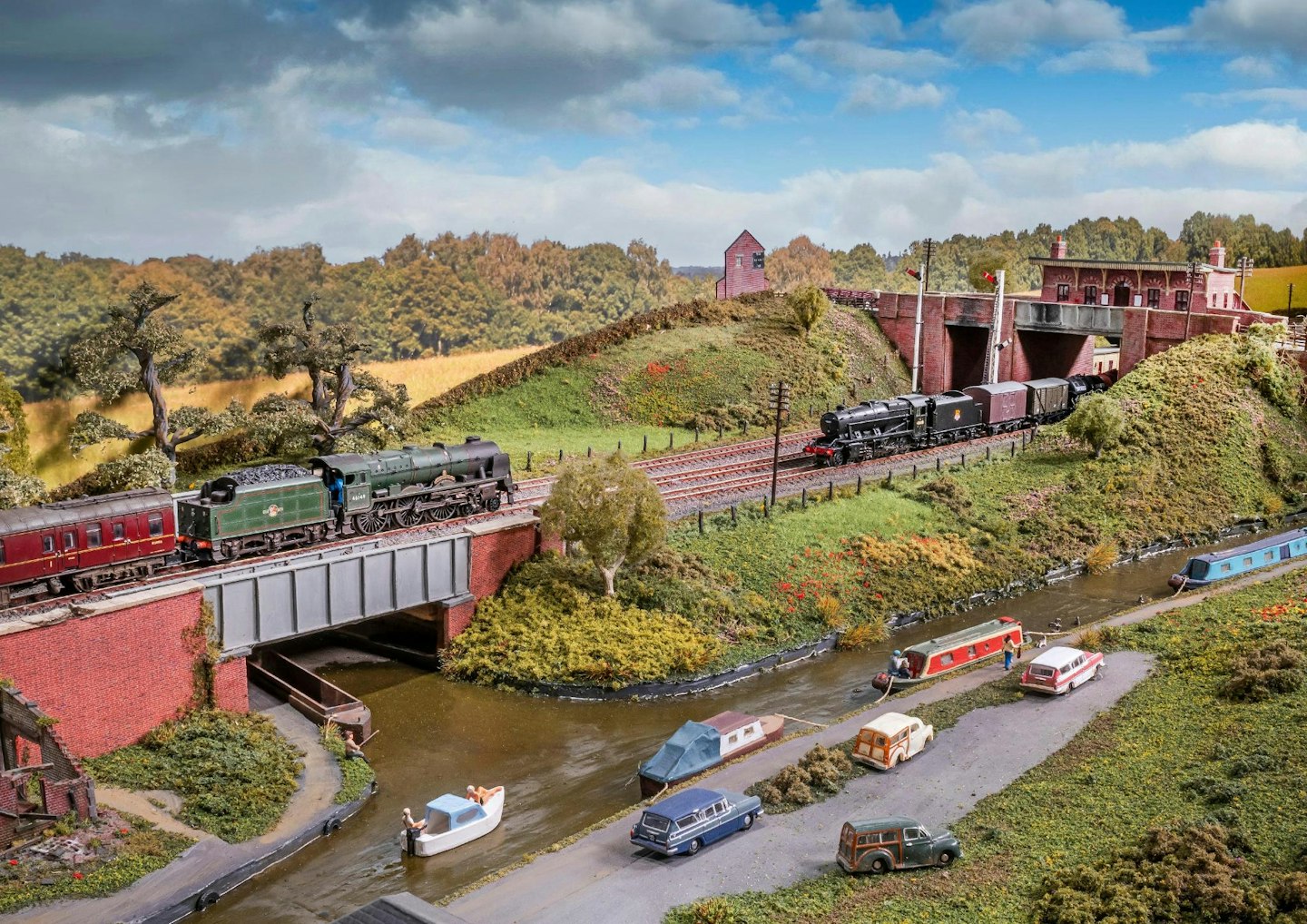
What makes this layout great?
“The track at ‘Brinklow’ is one long, sweeping curve so your eye can never settle on a set distance and block other aspects of the layout from view. It forces you to spend a few moments taking everything in and appreciating every aspect of it.”
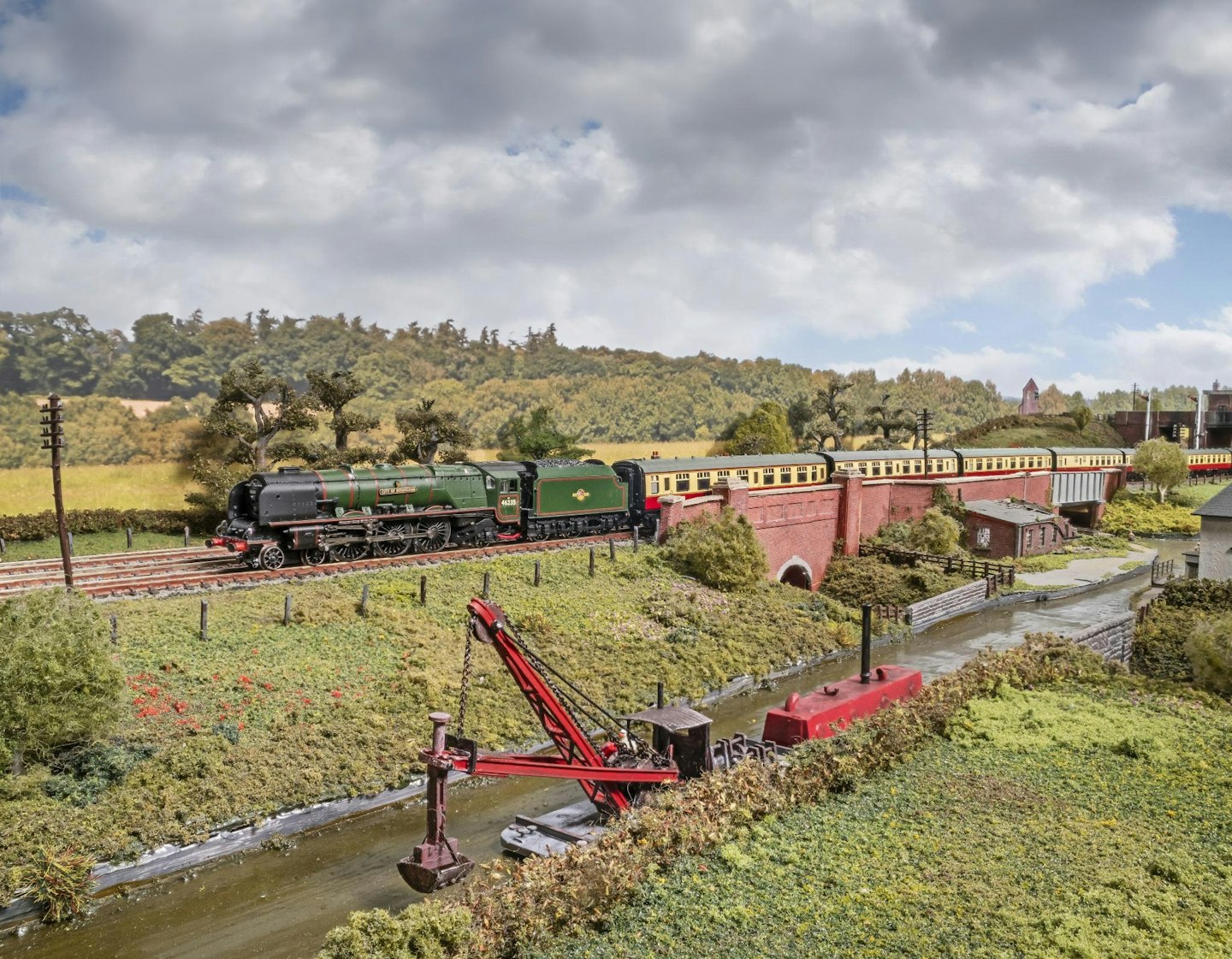
We love club layouts at Model Rail. At their best, they showcase the power of teamwork. A club layout can play to everybody’s strengths. It will have more complex wiring, superb buildings and realistic scenery. With the extra space afforded by a clubroom, layouts tend to be larger too, allowing miniature trains to snake their way through the landscape.
In 2015, the Milton Keynes Model Railway Society moved to new premises and decided the time was right to build a new ‘N’ gauge layout. Led by Wayne Webb and Mike Biss, a plan was agreed among the ‘N’ gauge cohort of the club and construction began.
“Moving premises was an enforced decision,” explains Wayne, “as the rent had doubled at our previous location. It seemed like the ideal opportunity to start something new, and with a list of requirements it didn’t take long to agree on a setting.”
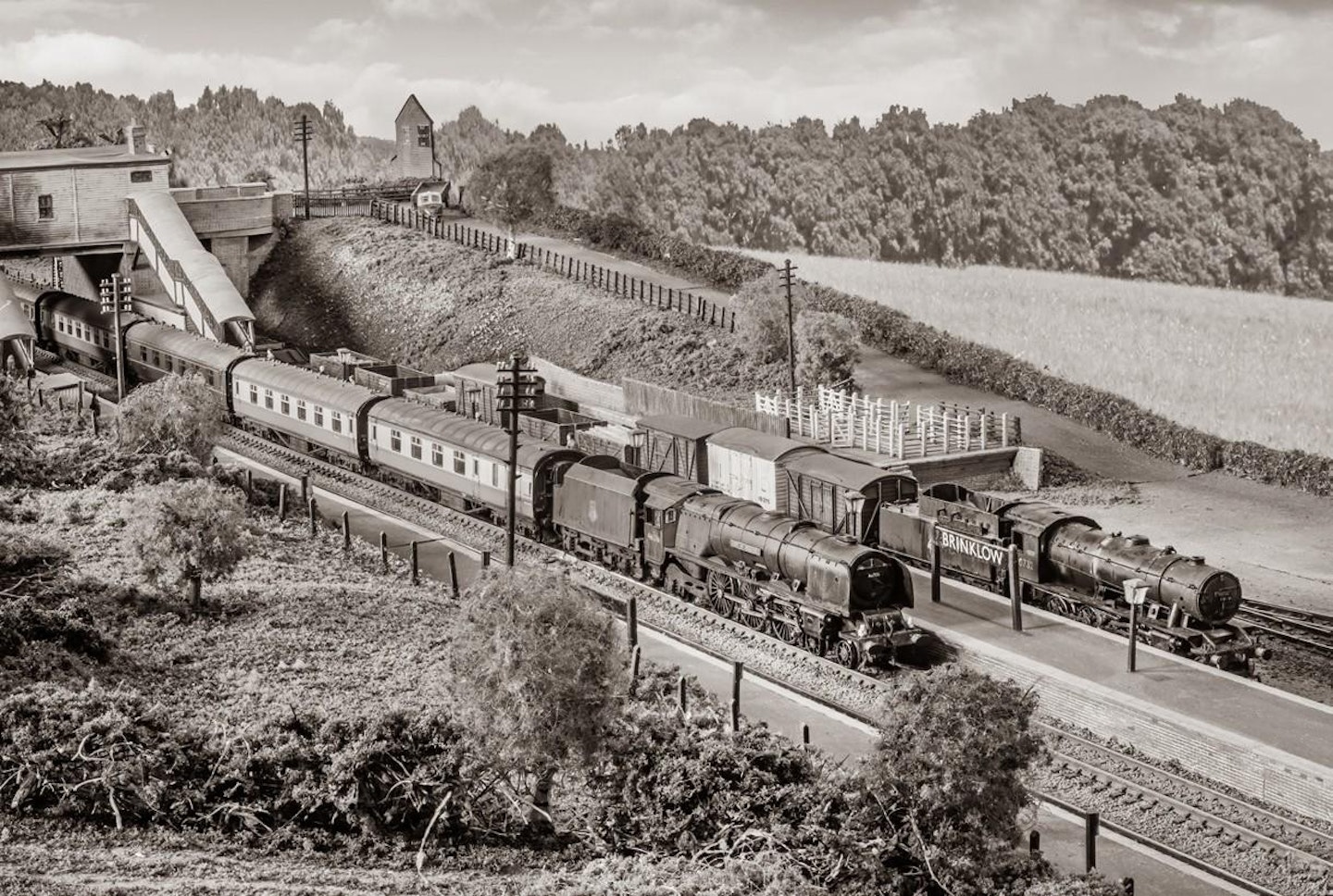
Those requirements included the layout consisting of three tracks, being suitable for either DC or DCC operation, and being an exhibition layout.
“Since the layout would ultimately spend a lot of the time in the club room we had to make it appeal to as many people as possible. Some of our members use DCC, some use DC. Some run British steam, some run American diesel. Making it available to everybody was important. It took a fair amount of research to find an area where only three tracks had been laid but I eventually came across a section of line between Rugby and Stafford on the Trent Valley line. The width of the trackbed was limited owing to the close proximity of the Oxford Canal. Here, there was a Fast and Slow Up line with a shared Fast and Slow Down line. It was only when doing the research that the existence of the station came to light. Originally, it was known as Stretton, but was changed to Brinklow in 1870 before closing in 1957. The goods yard followed four years later, and today nothing remains of the site.”

3 things we like
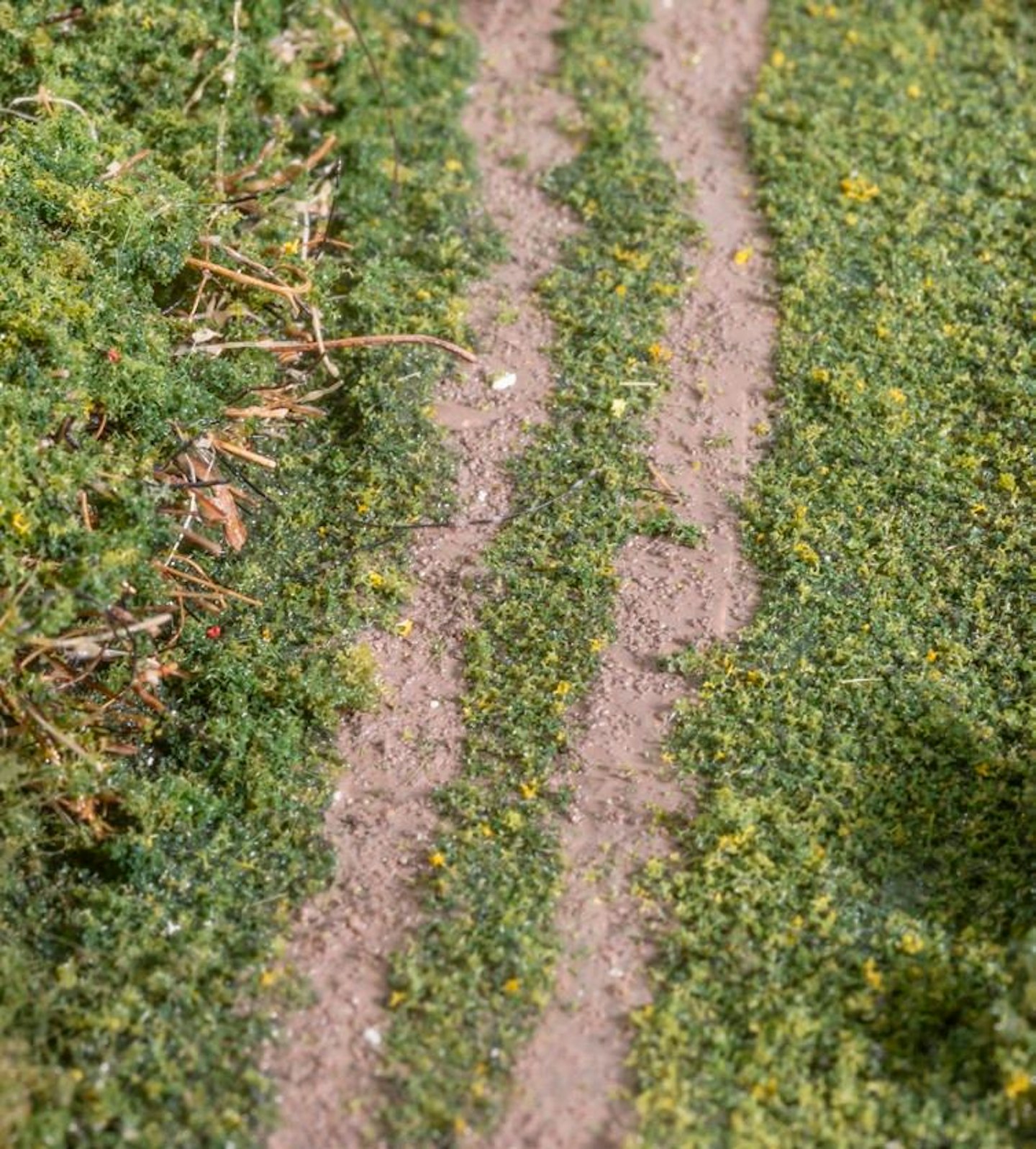
1 The path trodden by tractor wheels.
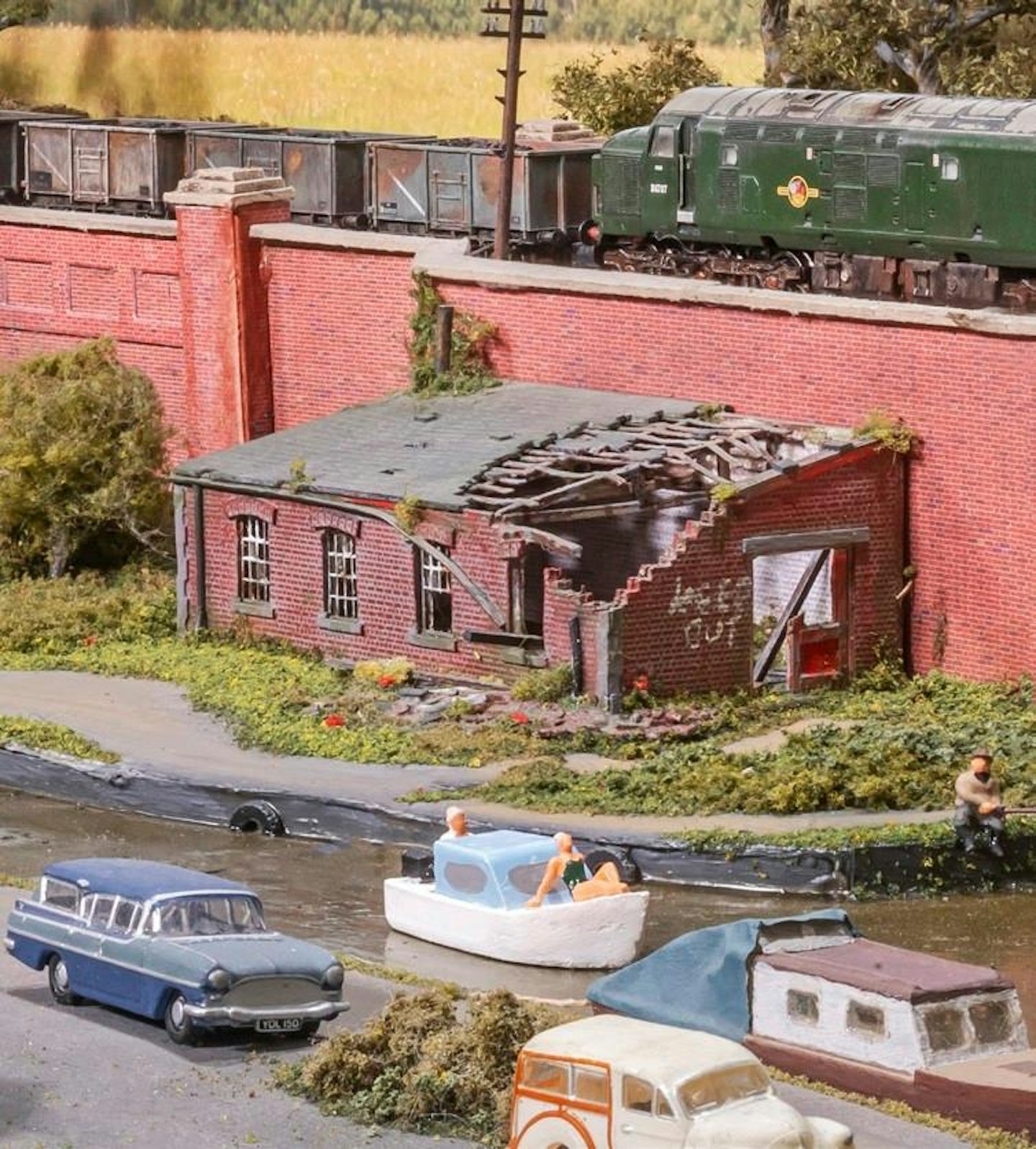
2 This derelict building is a stark contrast to the surrounding area.
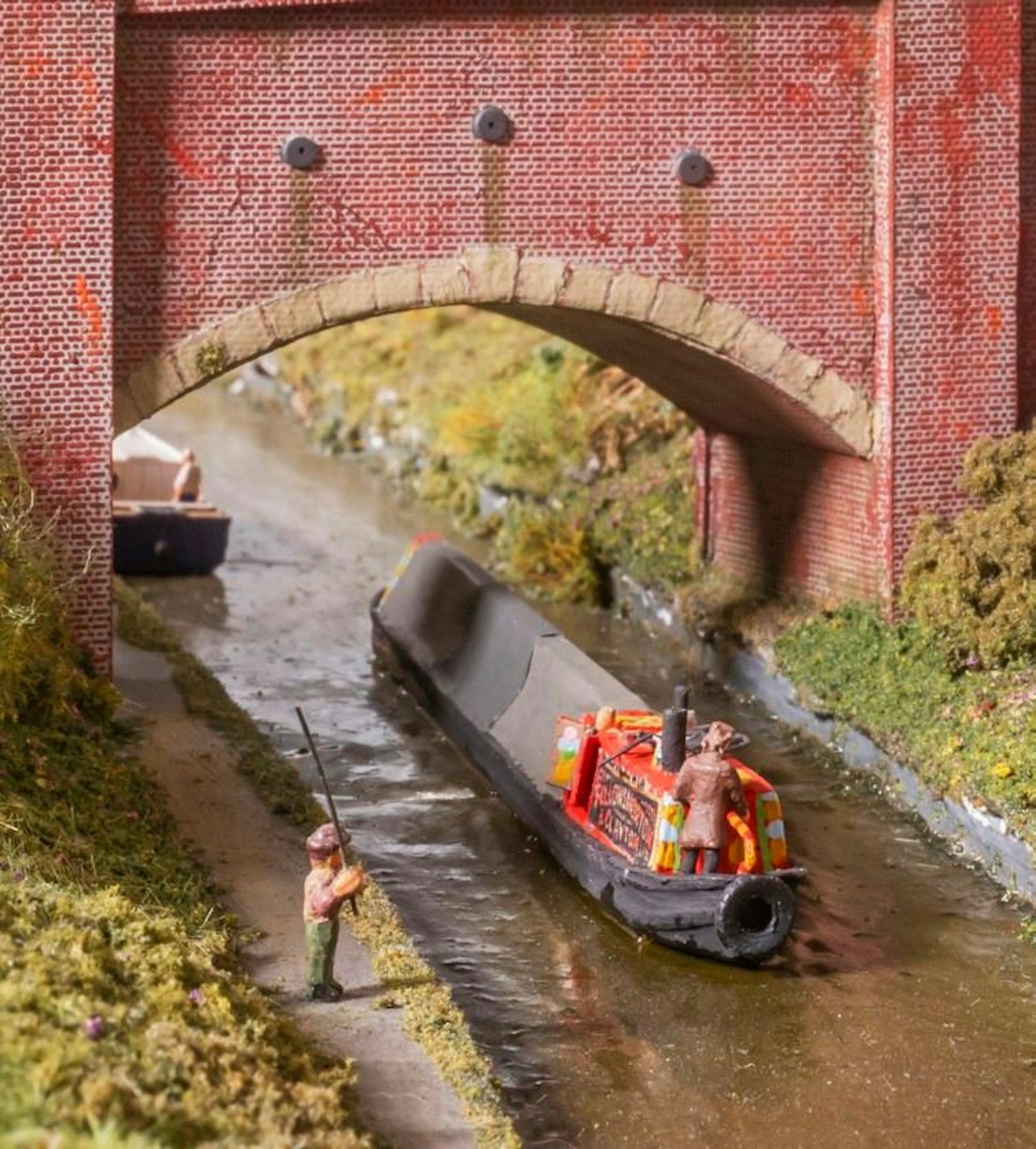
3 Do you think he’s caught anything yet?
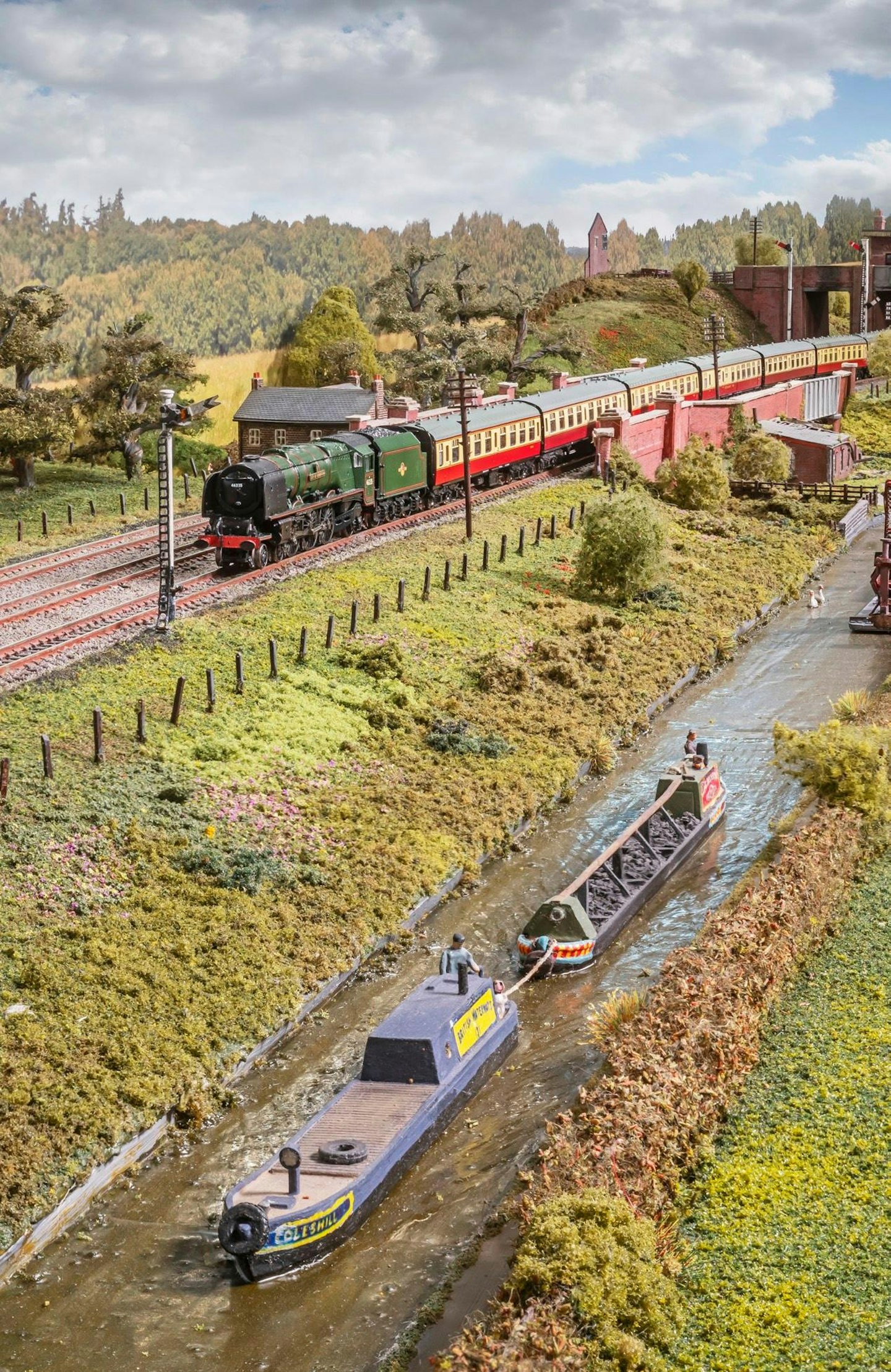
Measuring 19ft by 2ft 9in, ‘Brinklow’ splits into five boards for transportation and is fitted with adjustable feet to cope with the uneven surface of an exhibition hall floor.
The track is Peco Code 80 and although the group have tried to keep everything as accurate as possible, they decided earlier this year to improve the layout by making a fourth line operational. The idea for the change occurred shortly after Mike Biss joined the layout exhibition team, and here he explains how he made those alterations.
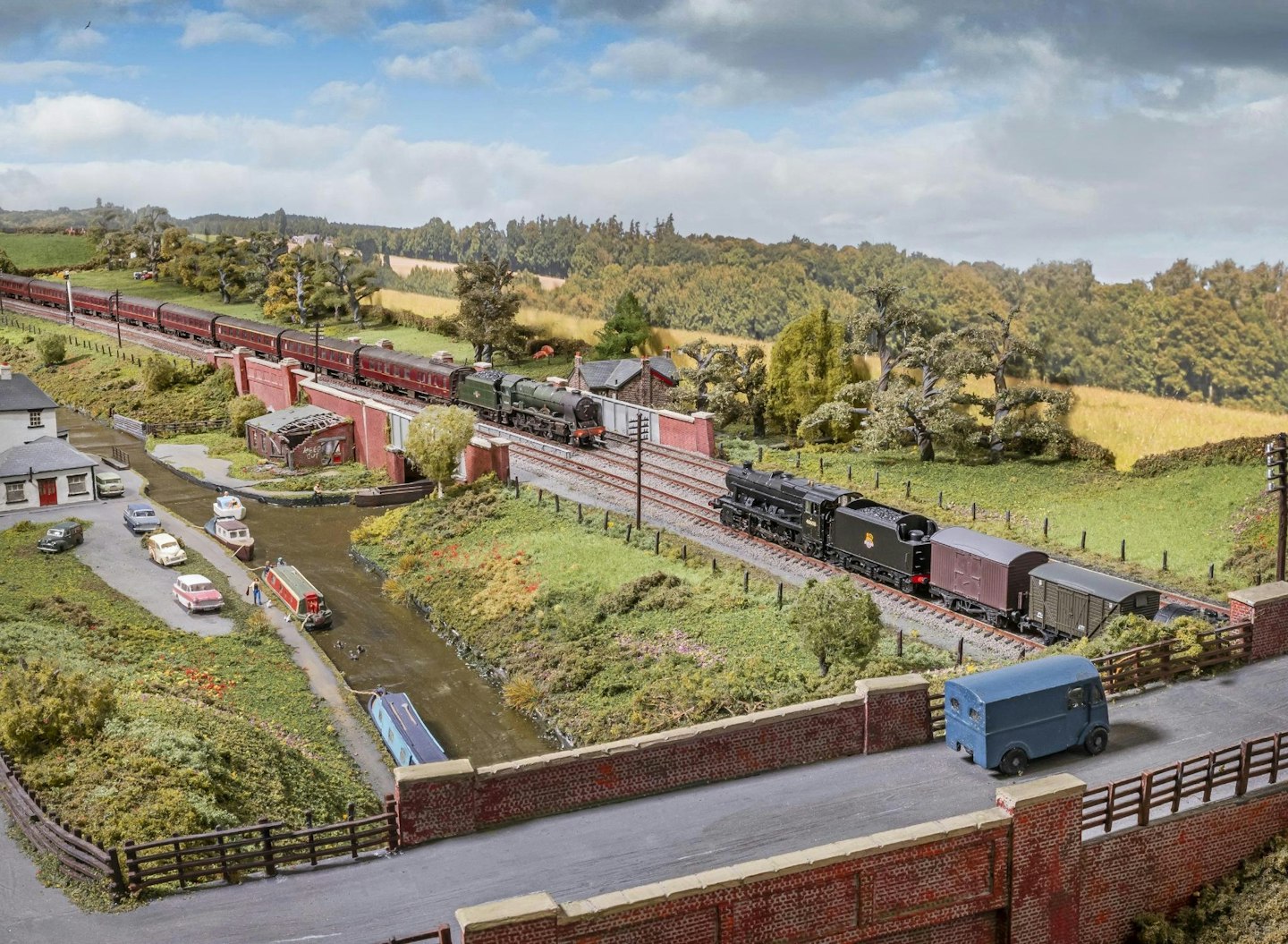
All of the buildings are either scratchbuilt or modified Kestrel kits, the majority being the former. The canal boats and the vehicles are a mix of scratchbuilt, kitbuilt and Oxford Diecast models. The canal reflects the transition from a working waterway to a leisure facility.
TRACKS AND TRICKS
“Previously, the fourth line just ended in the sand drag, but it was decided that with a slight extension on the end board of about 2in, this would allow a new curved bit of track which was then to be connected up from the fiddleyard and to the current northbound line via a new pair of crossover points. We fitted a new point in the fiddleyard to access the new line, but quickly realised this one road wouldn’t be able to supply enough trains, so an additional pair of points were also fitted to allow trains in the second storage road to access the new Down Slow line.
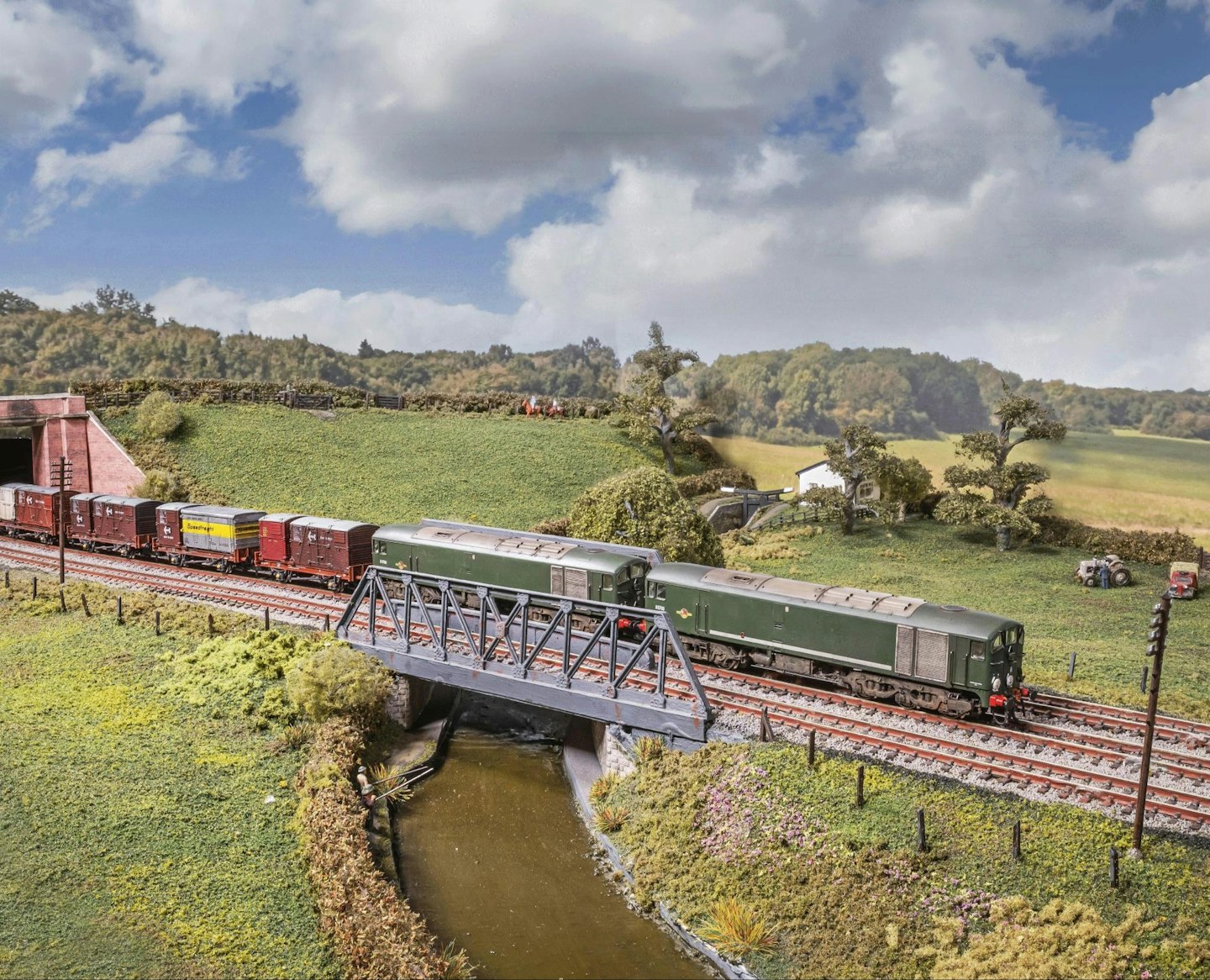
“This gives the operators access to a wider selection of trains. The removal of the old track was fairly straightforward and the current dead end was then extended to run behind the signal box, to finish in line with the platform ends. This makes it more prototypical in appearance, although of an earlier period. Despite the crossover being a bit closer than in real life, it does allow for trains to come out from the fiddleyard on the Down Slow line and wait at the signal (all of which are operational), allowing an express through from the Down Fast line, and then proceed via the crossover.”
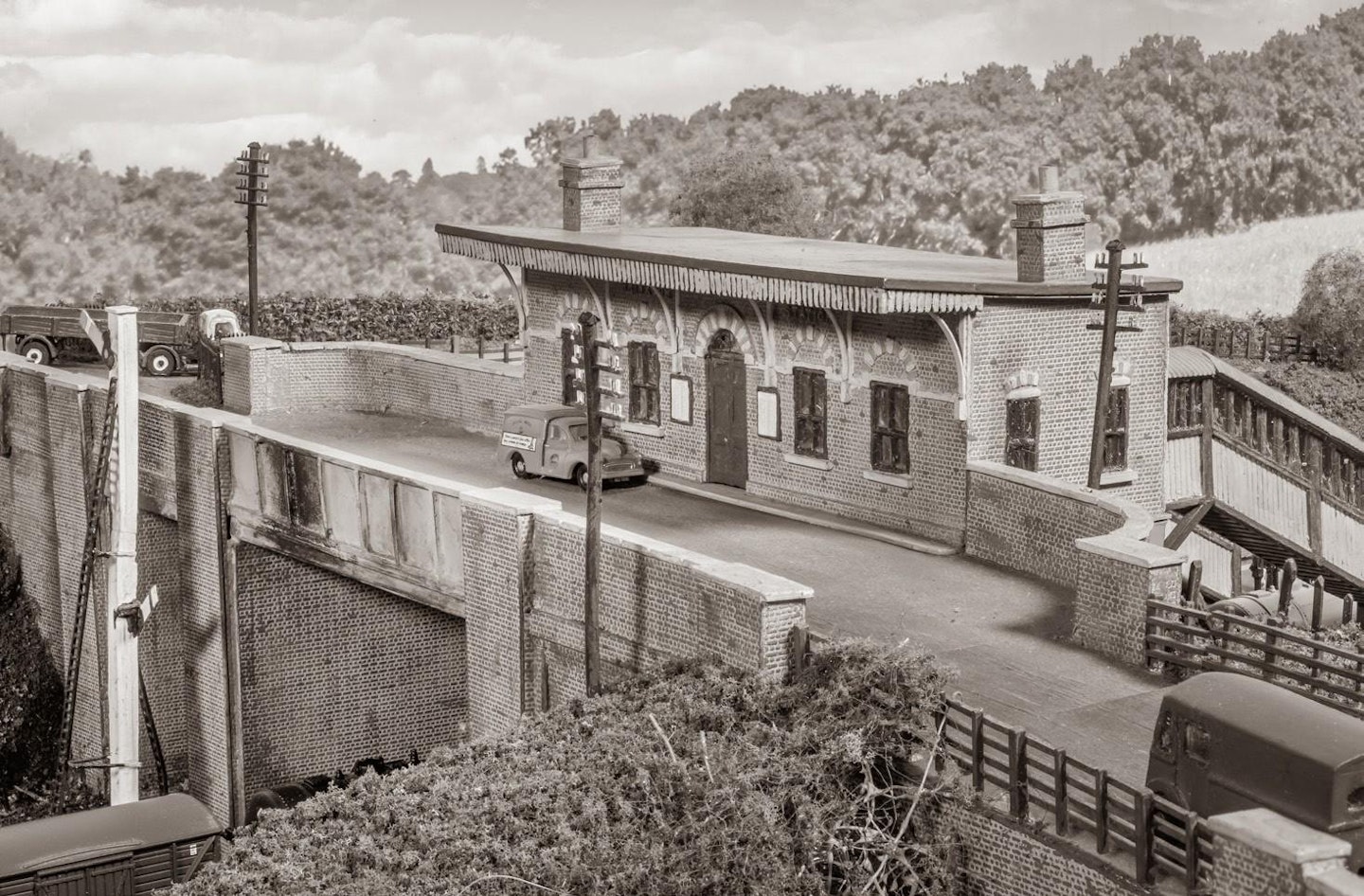
The club, like any other railway builder, had the challenge of making the railway look as though it had been built into the landscape, not the landscape being built around the railway. It’s a challenging element of building to get right for a modeller when the track is always the first thing to go down. Wayne details how the club achieved this realistic appearance while also keeping the weight as low as possible.

“We opted to make a lattice out of cardboard strips that we could form to give us the desired result. The scale width of ‘Brinklow’ is not much longer than a football pitch so we didn’t need to create mountains. A gentle slope sufficed. Paper was then glued on the top in several layers to create the final embankments before being painted green and covered in various scatters. This was then all finished off with some bush edging and trees made by the late Bob Taylor, who also photographed the backscene that got stitched together and printed for us in Telford. There was one problem though. Doing the new scenery around that fourth line highlighted just how tired and dirty the existing grass had become and it meant I had to go along and give the rest of the layout a refresh, bringing it back to the vibrancy it once had.”
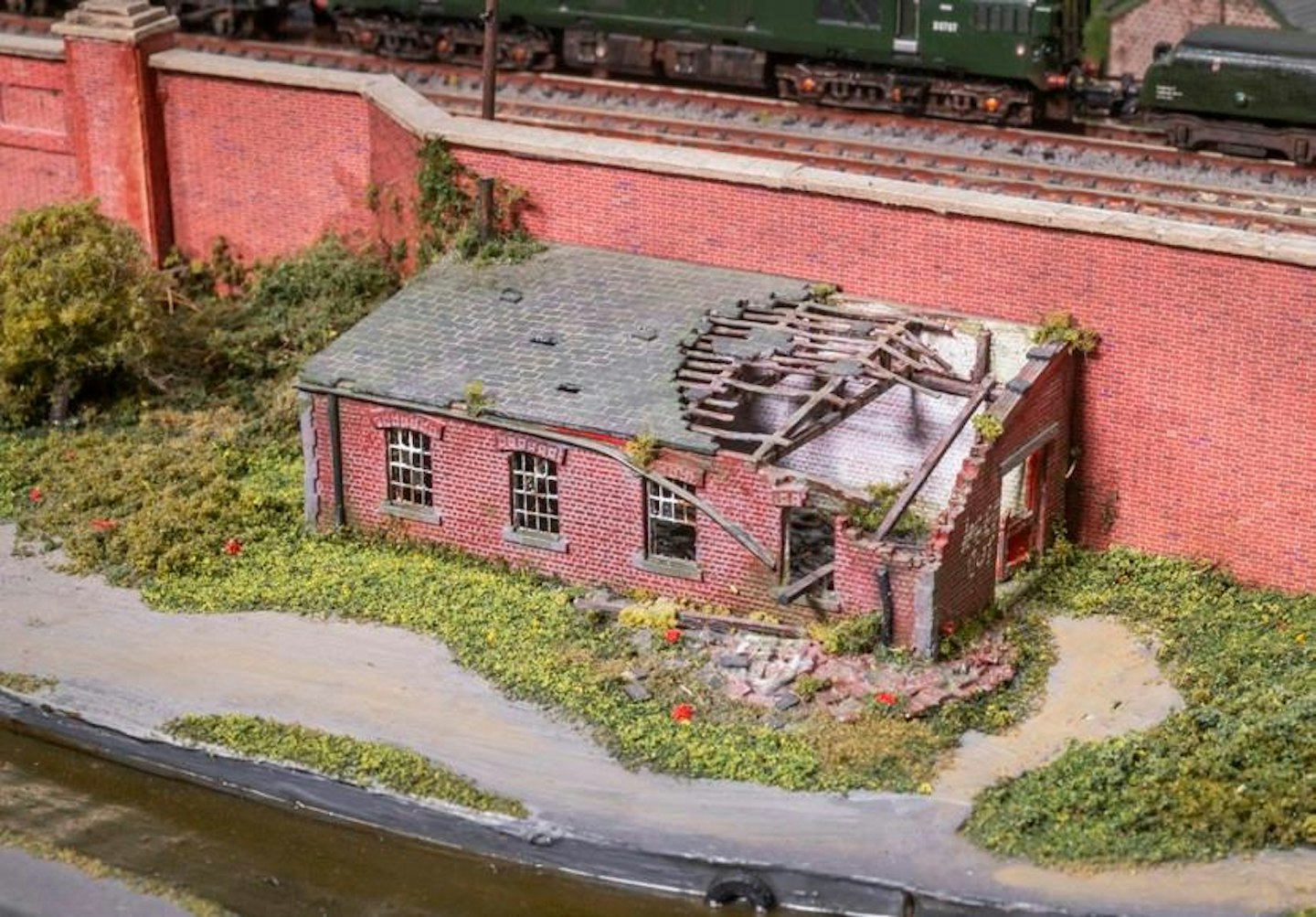
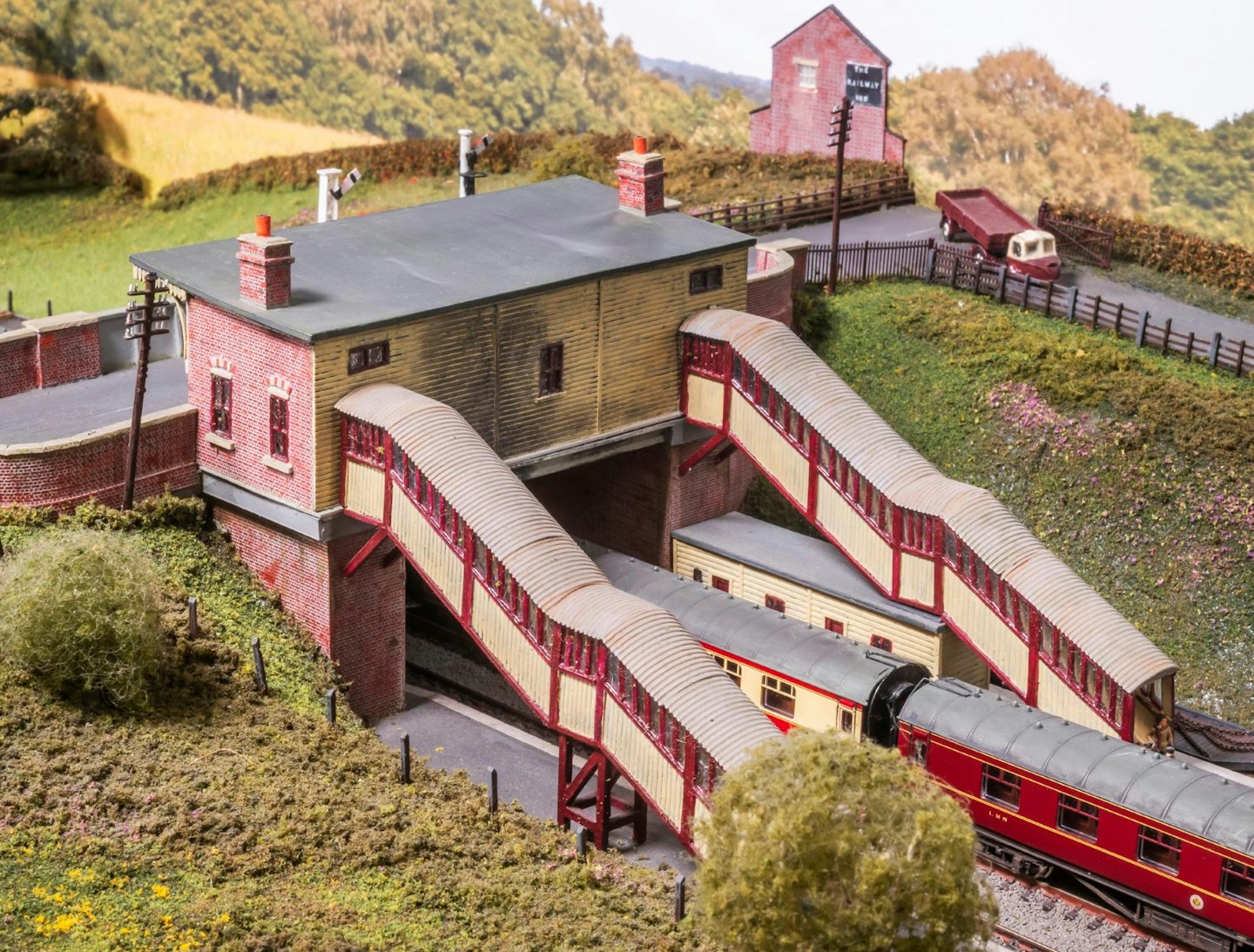
Wayne’s scratchbuilt structures begin with a card base to create the shape and proportions, before it is covered with textured plastic card. The station was the most timeconsuming build, adapting parts from a Ratio plastic kit to fit within the available space.
SWITCHING IT UP
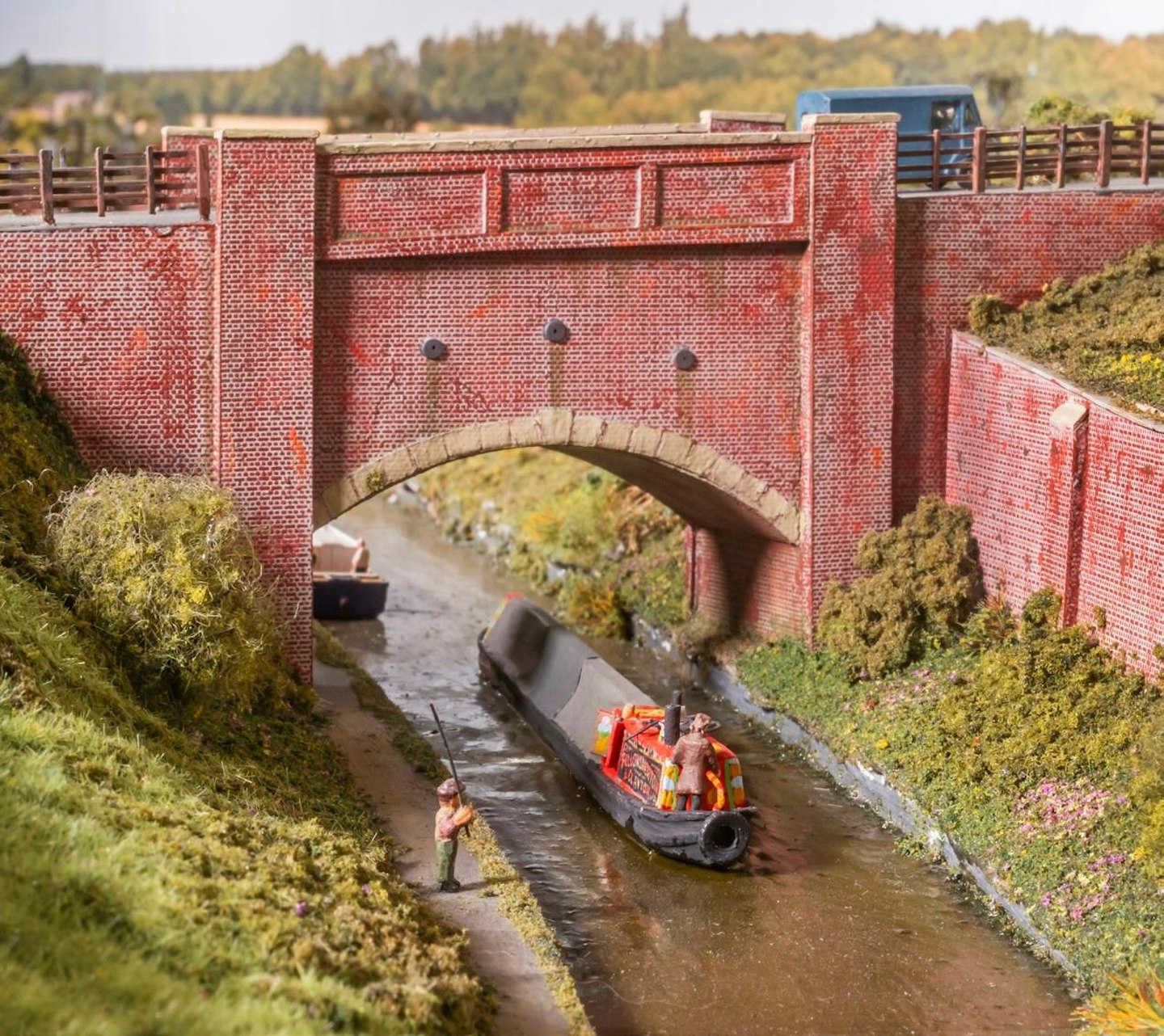
With a layout so long and with nine roads on the fiddleyard, the club needed a way of keeping track of what was where. Seventy-two switches proved to be the answer.
“As the layout can also be operated on DC we needed a way of isolating sections so all the trains didn’t move at once. We can hold roughly four trains per road, depending on length, so to be able to cut the power to some was vital. LEDs light the route that’s selected on the control panel, and on the whole everything is a lot more fun to operate and, hopefully, more enjoyable for the viewers as well.”
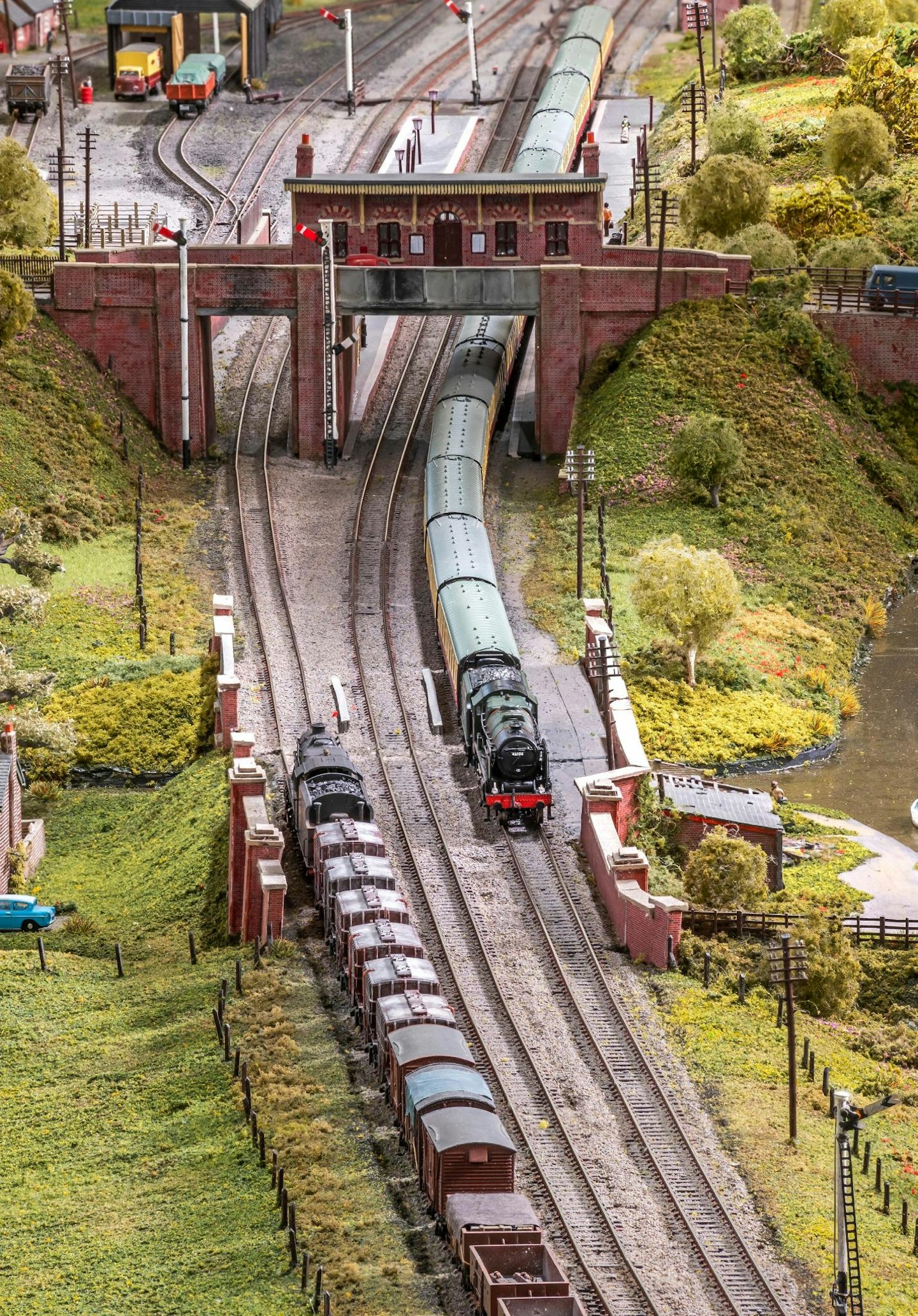
At shows, the club like to operate a wide range of locomotives dating from 1948 to around 1963, with a mixture of passenger and freight formations.
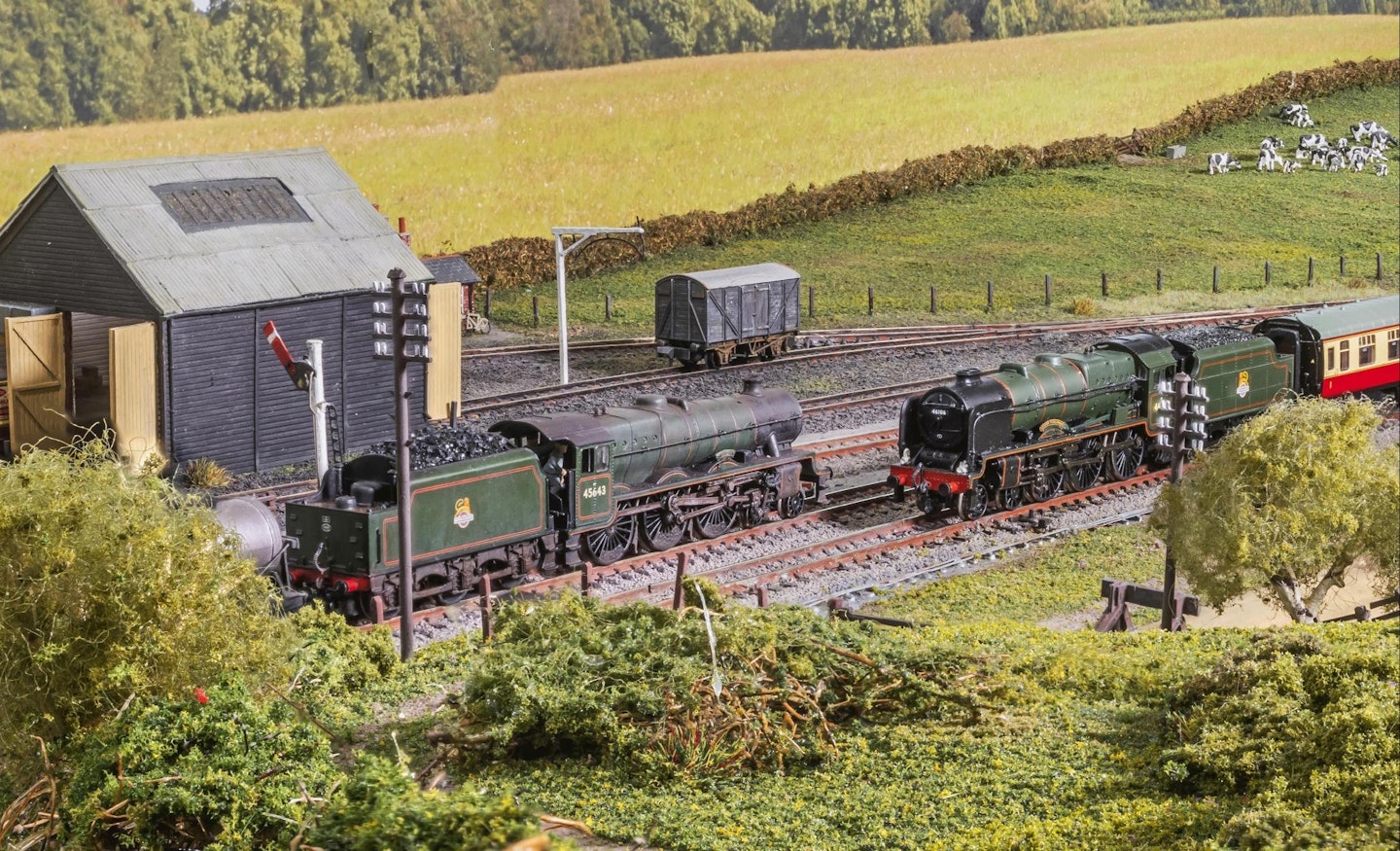
‘Brinklow’ will be one of many great layouts on display at this year’s International N Gauge Show, held at the Warwickshire Event Centre on September 14-15. You can read our full preview of the show on page 6, but be sure to go and say hello to the Milton Keynes Model Railway Society and admire ‘Brinklow’. You’ll see just how much work goes in to getting trains traversing the layout and you’ll see the result of a group of modellers coming together to create a superb ‘N’ gauge layout.
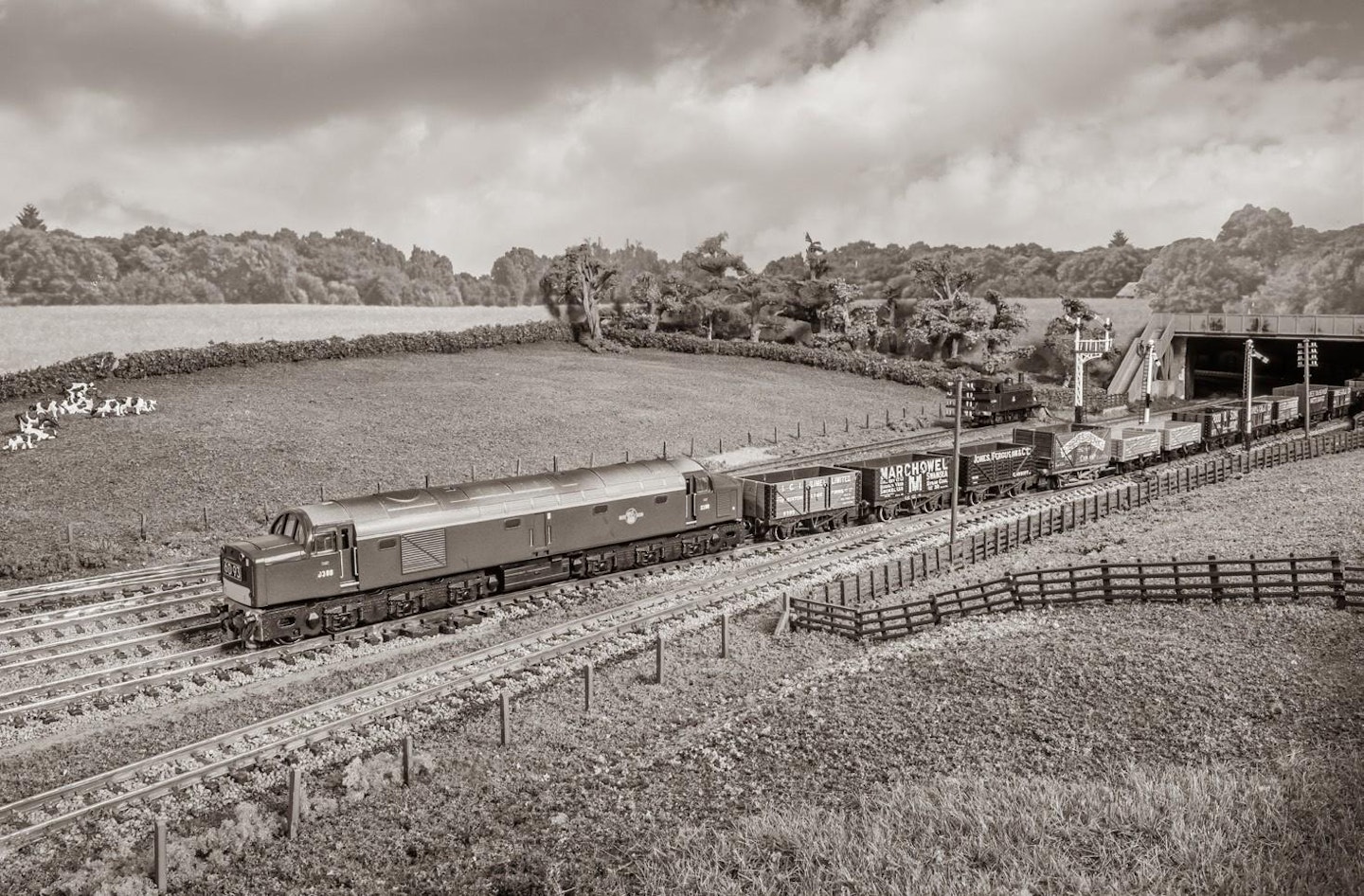
STATISTICS: ‘BRINKLOW’

-
Gauge and scale: 2mm:1ft, 9mm gauge, ‘N’
-
Size: 19ft by 2ft 9in
-
Track: Peco Code 80
-
Power and control: DC and DCC
-
Time to build: Two years
ABOUT THE MODELLERS: MILTON KEYNES MRS
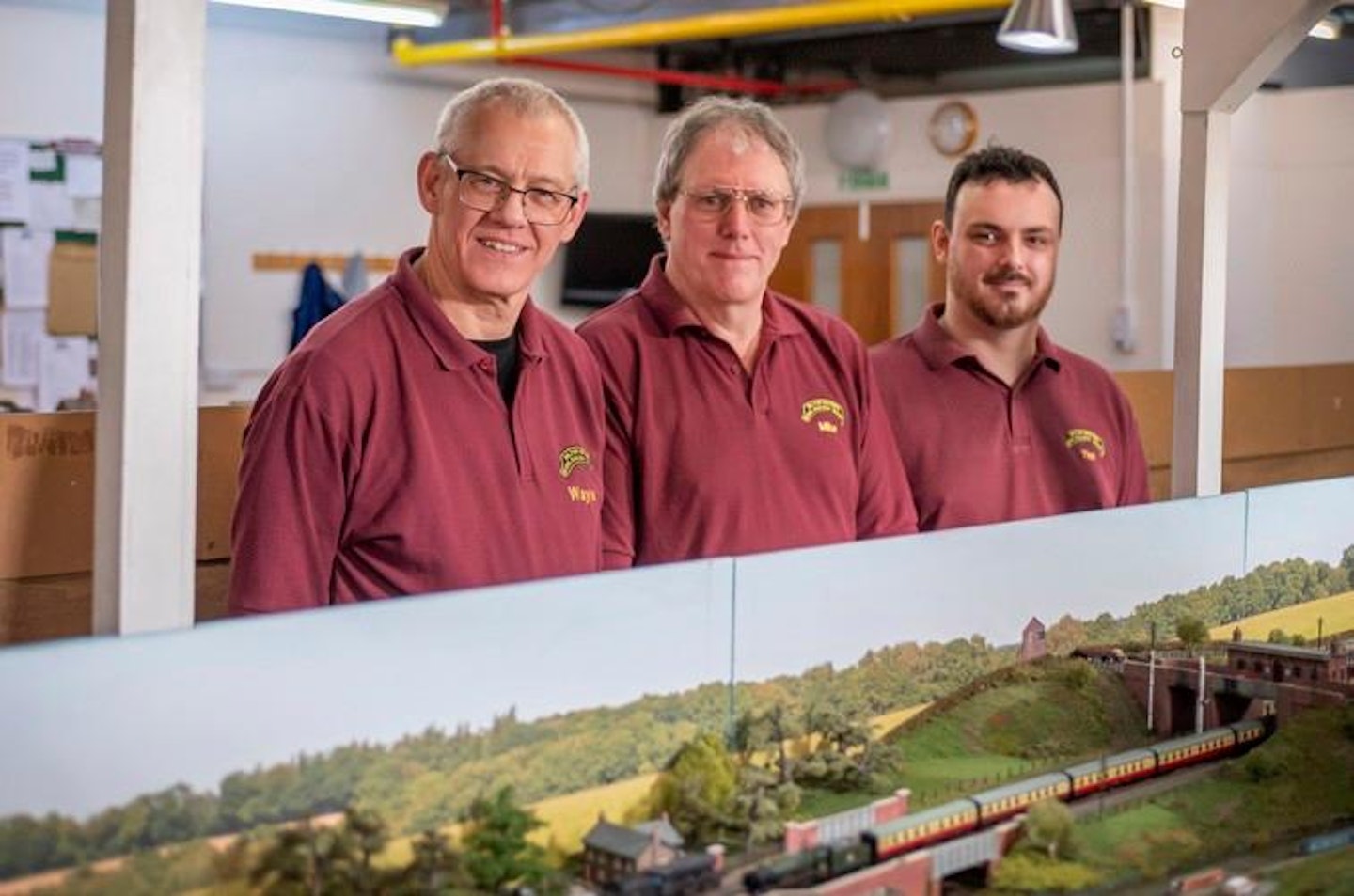
Founded in 1969 the Milton Keynes Model Railway Society now has approximately 65 members, with its ‘N’ gauge cohort being the largest, and it meets twice a week. It also hosts an exhibition each year that usually features over 20 layouts and traders.
In each issue we cover every stage of the hobby, from buying a first model train set right through to museum standard fine-scale modelling. Model Rail magazine is full of helpful tips, advice on model train layouts, details on model train sets, step-by-step articles and more! Choose the right subscription option for you and get instant digital access to the latest issue.

